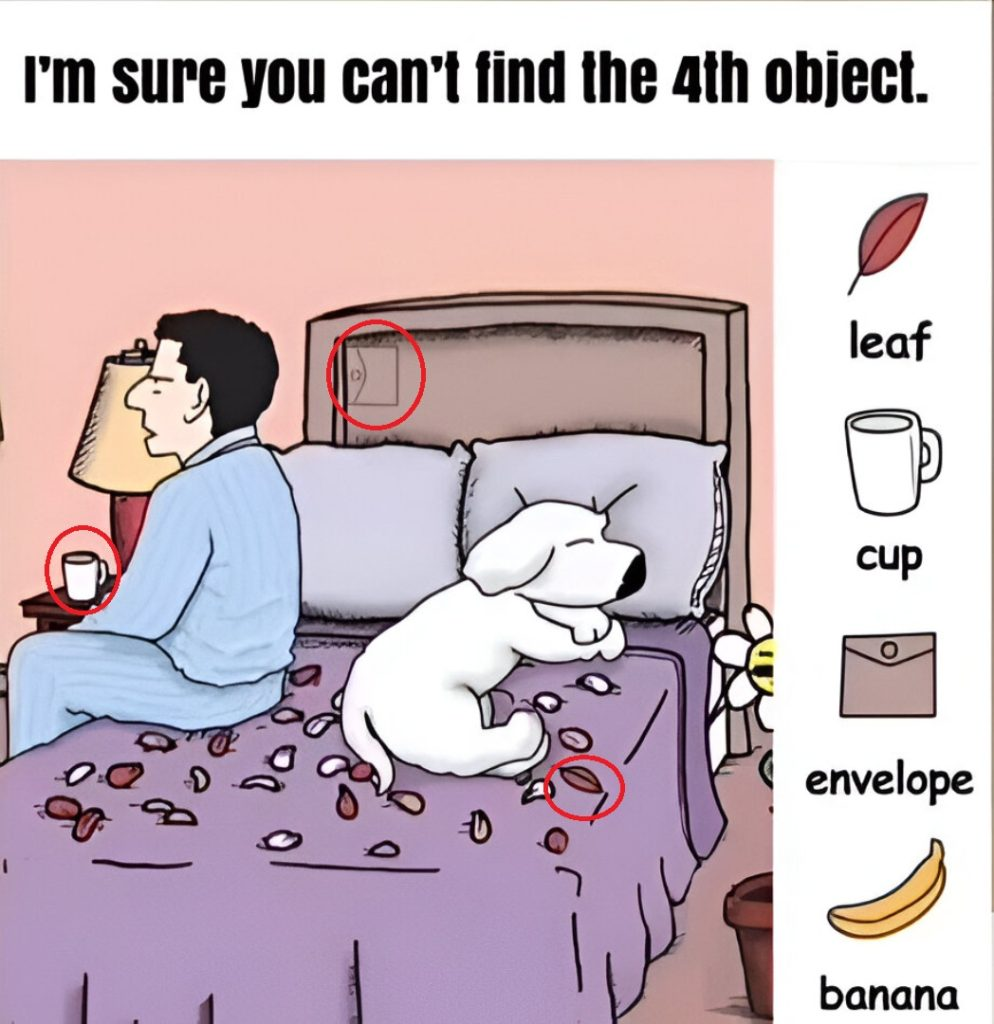Have you ever tried a hidden object puzzle that seems easy at first but quickly reveals itself to be a challenging brain teaser? Today’s puzzle asks you to find four ordinary objects— a leaf, a cup, an envelope, and a banana— cleverly camouflaged in a busy scene.
Though the leaf blends invisibly into flower petals near a dog’s tail, the cup sits on a dark nightstand but stands out once focused upon. The envelope hidden in the headboard disguises itself with the faint outline of a flap, making it easy to overlook, while the banana camouflaged as part of a plant’s stem is the toughest to spot.
Most people fall into the same common traps: rushing the search, falling prey to tunnel vision by focusing only on bold colors and large shapes, and losing patience, leading them to give up prematurely.
These puzzles serve as mental workouts, sharpening attention to detail, patience, and visual perception by forcing the brain to override instinctual shortcuts that filter out camouflaged objects.
Finding these hidden objects develops sharper focus, cognitive agility, and problem-solving skills, boosting neuroplasticity—the brain’s ability to adapt and form new connections.

Next time you’re feeling drained or distracted, try slowing down with a hidden object puzzle—you might be surprised how rewarding it can be to finally spot what’s been hiding in plain sight, sharpen your mind, and improve how you observe the world around you.
Remember, sometimes the answers are right in front of you; all you have to do is truly look.


